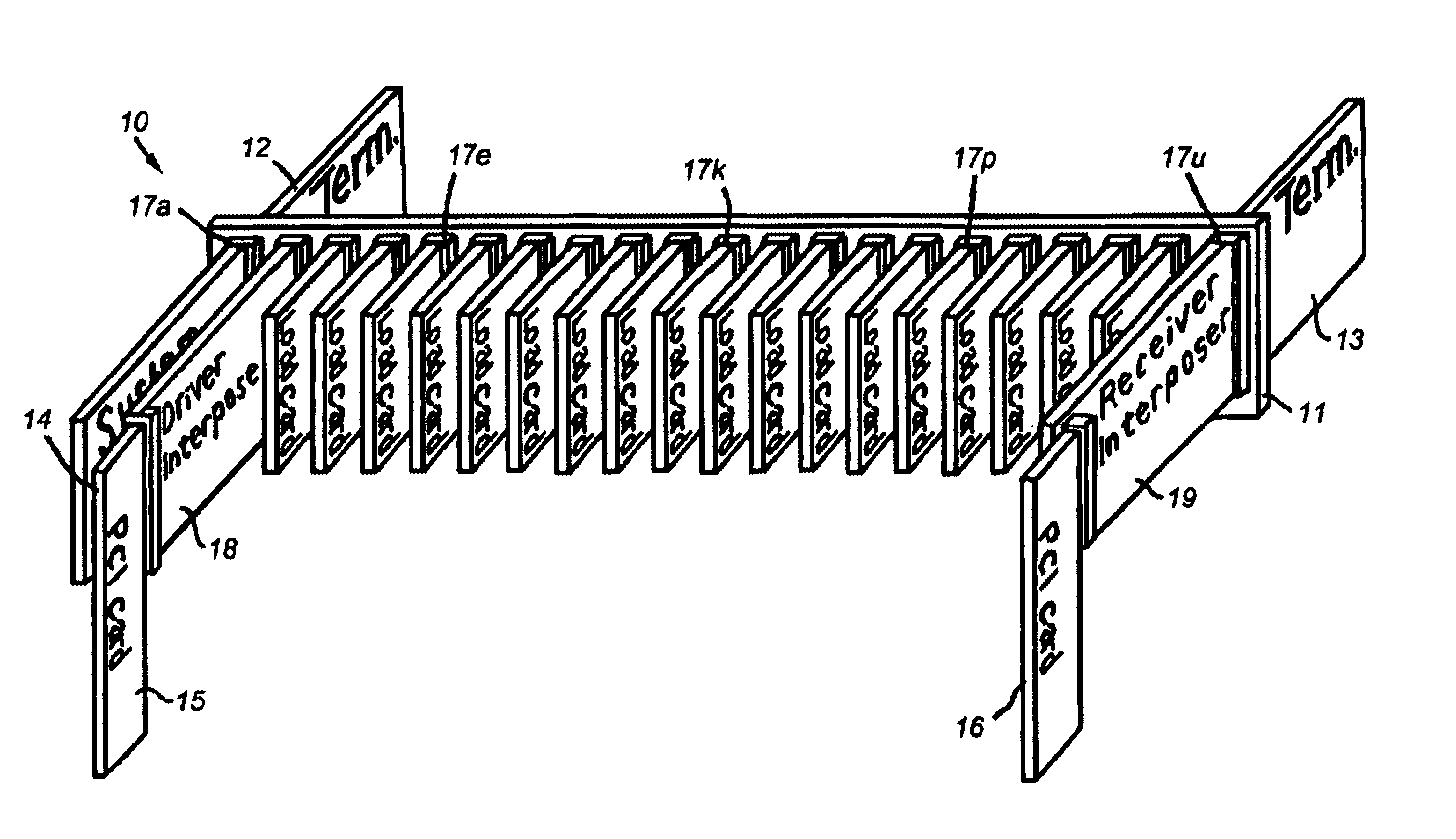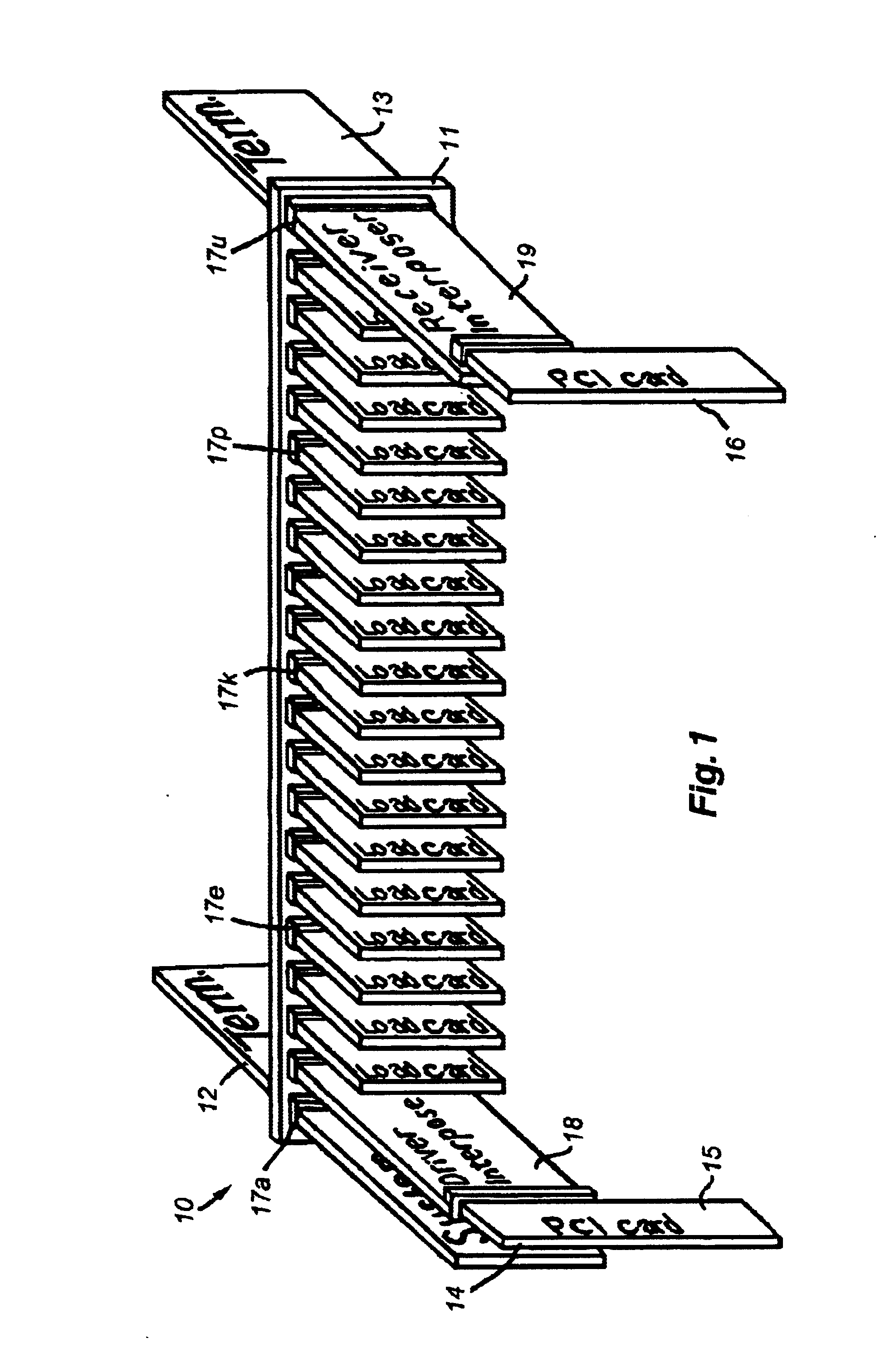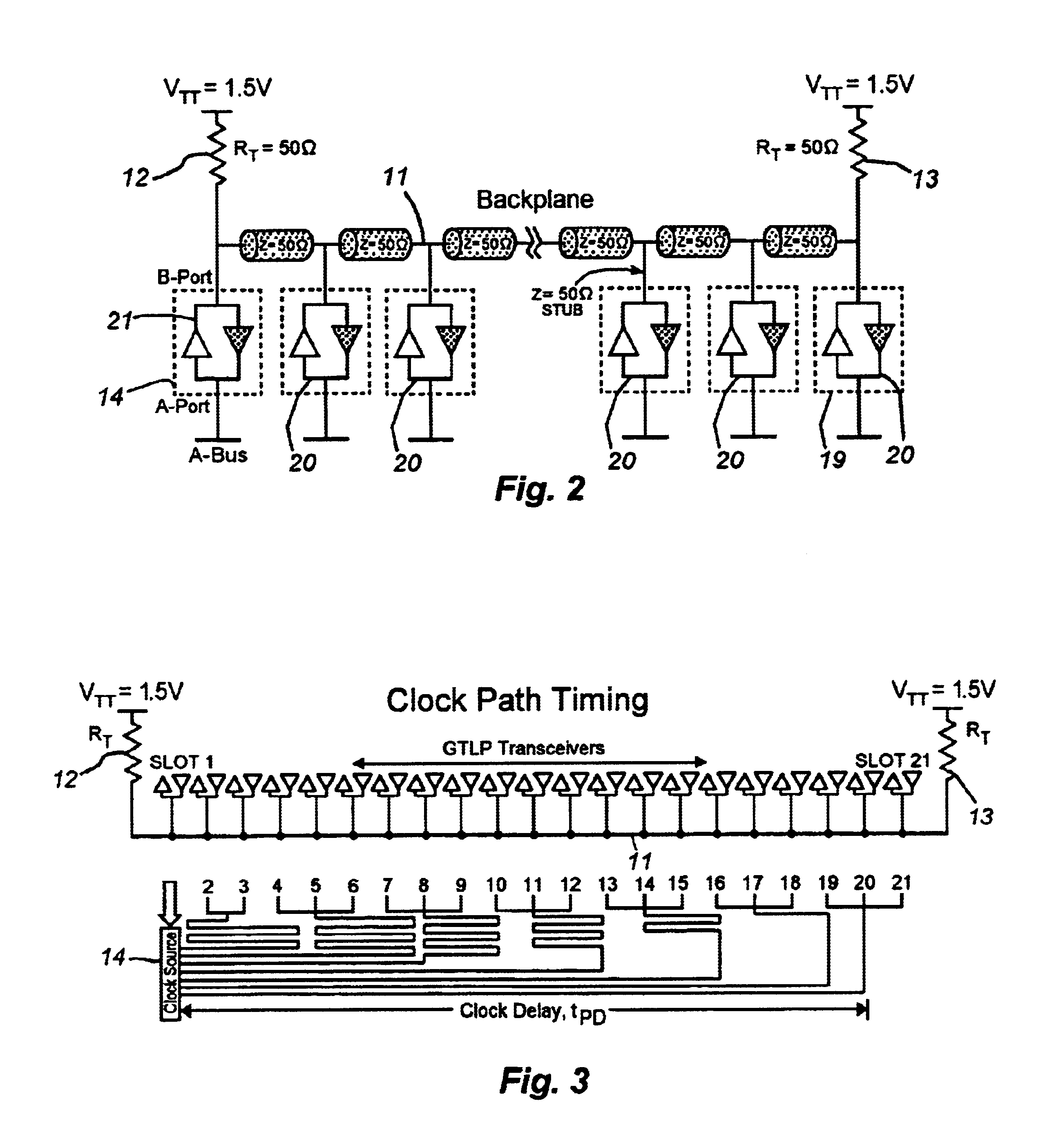Backplane system using incident waveform switching
a waveform switching and backplane technology, applied in the field of system interfaces for backplane technology, can solve the problems of inability to meet the needs of dedicated irq lines, too slow, and inability to meet the needs of edge connectors,
- Summary
- Abstract
- Description
- Claims
- Application Information
AI Technical Summary
Benefits of technology
Problems solved by technology
Method used
Image
Examples
Embodiment Construction
A backplane system 10 of the present invention is shown in FIG. 1. The system 10 includes a backplane bus 11 having matched impedance terminations 12 and 13 on the back or south side of the bus 11. The impedance values of the terminations 12 and 13, the impedance values of the slot connectors identified herein, and the impedance values of the backplane bus traces 11, together provide the backplane impedance of the system 10. The impedance terminations 12 and 13 are coupled to a supply rail that establishes the maximum swing potential of the backplane bus 11. The system further includes a system clock card 14 that generates the clocking scheme for each of one or more of a plurality of peripheral devices provided on daughter cards such as near card 15 and far card 16. Each card includes one or more integrated circuits for performing functions of interest regulated by one or more central processing units tied to the backplane bus 11. The cards 15 and 16 are of the type that may be inse...
PUM
 Login to View More
Login to View More Abstract
Description
Claims
Application Information
 Login to View More
Login to View More - R&D
- Intellectual Property
- Life Sciences
- Materials
- Tech Scout
- Unparalleled Data Quality
- Higher Quality Content
- 60% Fewer Hallucinations
Browse by: Latest US Patents, China's latest patents, Technical Efficacy Thesaurus, Application Domain, Technology Topic, Popular Technical Reports.
© 2025 PatSnap. All rights reserved.Legal|Privacy policy|Modern Slavery Act Transparency Statement|Sitemap|About US| Contact US: help@patsnap.com



